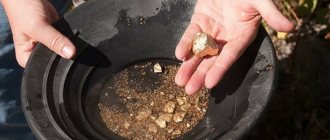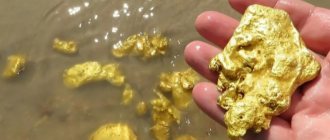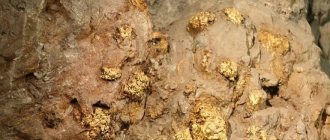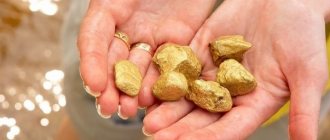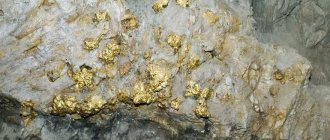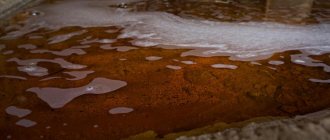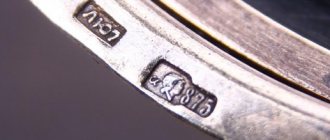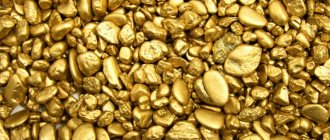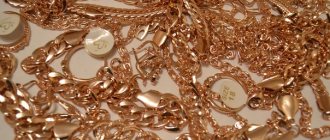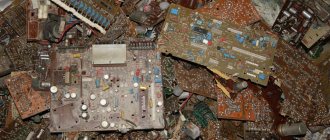Post updated: Jul 11, 2020
Gold is a noble metal, the mining of which began in ancient times. It may seem that this material is now of no practical value. But even in the modern world, you can see cases of brutal bloodshed that are directly related to this metal. This article will talk about where you can find gold and how you can do it.
A little history
If we go back to the times of Ancient Rus', it is reliably known that lands containing gold were not discovered at that time, even despite the fact that the territory of the state was quite vast. Ruler Ivan III was obsessed with the goal of finding the noble metal and even invited specialists from distant Italy for this purpose. But to his regret, only a small piece of gold was found, which was only enough to make a small cross.
The next seeker was Ivan the Terrible. For the sake of gold, he even conquered Siberia with the help of a huge army, but he never achieved the expected result. The same fate befell all the other rulers of Ancient Rus'. But the turning point in the history of gold mining was the coming to power of Peter I. It was under the power of this ruler that the first items of clothing and jewelry that contained gold and precious stones began to appear.
The first gold nugget was mined in 1945 by a Russian peasant from the Urals who was building a house on the river bank.
While digging a hole, he found golden grains of sand. The peasant immediately showed the find to his friend, who was also a silversmith. The master confirmed that the nugget was genuine. Experts arrived at the place where the grains of sand were found and began further searches. But unfortunately, they left with nothing. And only two years after the discovery of the deposit, a decision was made according to which it was necessary to continue the search and dig a mine. This decision turned out to be more than successful.
At the bottom of the dug shaft, a large amount of gold reserves were found, which marked the beginning of larger-scale mining of the metal.
Sanarka River
In the 19th century, Sanarka was known throughout the world as the richest deposit of precious stones and minerals, with the light hand of Academician Koksharov called “Russian Brazil”. In some places, the river soil is gold-bearing. The now abandoned Andreevsky mine reminds us that there was once much more gold here.
Where to look for gold
The question of how to quickly and efficiently find gold in the ground, as well as in what places this should be done, worries many seekers. In fact, there are many places where gold particles are present, but they are contained in very small quantities. If you are serious about searching for a large mine, then luck may turn your way, but the likelihood of this is negligible.
To find a more accurate gold deposit in nature, it is necessary to focus on indicators of the presence of this noble metal.
A small part of the precious metal can be found in sea water. According to experts, if you separate all the sea water from the gold reserves, you will get about 10,000,000,000 tons of metal. This figure is simply shocking. But at the moment there is not a single way in which this could be done.
Geology of the proposed gold deposit
First, you need to know the geological nuances of the area being explored: the type of rock, the structure of the soil, how far away is the vast deposit, etc.
Often, the closer the gold-bearing layer, the more promising the search will be, since deposits extend for many tens of kilometers in a certain rock. Or during a “collision of rocks,” where a significant increase in pressure and temperature produces yellow metal—it’s quite easy to find such places: the rock changes color.
Iron is the companion of gold
Black sand (hematite and magnetite) is the most common neighbor of gold sand. When washing river soil, you can often find black and yellow particles. Therefore, sand with black, red or orange splashes is always a sign of gold.
It is pure precious metal that can rarely be found in nature. Most often, gold is found with many impurities, from which the metal will then have to be purified. The most common place where you can find pure gold without impurities in large quantities is in quartz beds.
Under the influence of natural elements, such as wind or rain, layers can be destroyed. As a result of this process, a solid piece of gold nugget is formed. Also, gold reserves can be deposited in several types:
- Eluvial deposits;
- Residual deposits;
- Bottom sediments;
- Terrace deposits.
Residual deposits can be observed directly near the vein itself, which has been subjected to physical or chemical influence. Eluvial deposits are most often located at the foot of mountains.
This is what quartz layers look like.
Terrace deposits are in most cases found at the bottom of the river. After a certain time, the river erodes the land, as a result of which an additional bottom is formed. The old bottom rises above ground level, which is why it is called a terrace.
The terraces, which are several hundred years old, contain a very large amount of gold reserves. Bottom sediments form at the bottom of rivers in the form of precipitation. With the help of rain, gold moves along the river bed.
Ore development.
Today, the process of mining gold deposits is not much different from the extraction of all other metals and ores. First, a deep shaft is made, and then huge pieces of ore are lifted to the surface, which contain what started all these searches and excavations. At the final stages, gold should be separated from all unnecessary elements and impurities. To do this, the metal is ground to a powder state.
Jalon Creek
The most profitable mine in the Dambukinsky gold-bearing region. The first samples showed up to 2.5 kg of gold per ton of sand. When the rich parts of the gold-bearing layer were mined here, its surface, after the rains washed away the sand, shone with nuggets that were easily visible to the naked eye.
Searching for gold in Russia
There is practically no exact answer to the question of how to find gold in Russia even today. The most promising regions for searching are the Urals, Chukotka, Magadan, and Amur. It was in these places that nuggets were discovered, weighing 16 kilograms. Similar finds are still in the memory of local residents.
But before you go looking for metal, you need to find out whether it is in a particular place. All the necessary information can be provided by geologists or indigenous inhabitants who are well versed in the given territory.
Very often, the discovery of gold deposits is mentioned in newspapers, so in order to collect as much information as possible, you should turn to archival data.
Industrial mining sites.
There are also special geological funds that collect information about gold mining in a particular region. Such funds can be of great help in advancing the search for a profitable mine.
If the places where gold reserves were found weighing 50 grams or more have become known, then nuggets several times heavier can be found there.
Based on everything that was said above, it should be concluded that before going to a specific region in order to start searching for precious metal there, you need to carefully check all the data, analyze the information, and view all photos and video materials.
Places recommended by seasoned miners
Gold miners with impressive experience are advised to visit and explore small bodies of water in inaccessible places hidden in forests and ravines. A good option to look for is a waterfall that creates large and small whirlpools. It is quite possible to find gold at the bottom of the natural “whirling” of water.
Shallow streams and settling of nuggets on rafts
Placing rafts under stream pebbles can collect and store large nuggets. Layered accumulations of pebbles often form an accumulation of bedrock deposits. During the continuous convergence of mountain streams, gold particles penetrate through the dense rock of the stream, which create deposits that are sometimes quite impressive in size.
The list of promising searches includes the territories of the Amur Region, Yakutia, Kolyma, and Krasnoyarsk Territory.
Waterfalls as filters for golden sand
Nuggets in a placer deposit are relatively easy to find, but the washing procedure requires physical labor. The presence of a waterfall nearby facilitates the process of filtration and purification from impurities and contaminants. In addition, the vertical movement of water from top to bottom forms holes and small recesses that can store particles of crushed rock.
How to look for gold correctly
Finding gold is a very long process that can last for years. It is unlikely that in the first days of searching the digger will find something worthwhile. In order to somehow speed up this process and make it more productive, it is recommended to study a large amount of literature that can teach you how to properly organize your searches.
It has already been said that gold is found in quartz strata. To detect them, you need to pay attention to certain signs that are characteristic only of such deposits.
Gold dredge
After many years, the technologies used to mine gold in ancient times have not changed much. All that has changed is the work of mechanized machines instead of human labor.
Today, few people are engaged in gold mining using trays, since this method is no longer relevant and widespread. But the technology has survived. Today, many people use a huge machine that has a large number of trays.
A dredge is a device used to flush water from a river. It is this huge and noisy structure that is capable of extracting precious metal from river rock. Although this method is very effective and profitable, it has a very negative impact on the environment. After dredging, river beds are left in a deplorable state. But in order to know how to find and then safely extract gold from the river, it is recommended to use dredging as the easiest way to mine gold.
Gravitational differentiation
This gold mining technology involves grinding rock that contains the metal. After these rocks have been loaded onto trucks, they are taken to special mills. Inside these mills, huge stones crumble under the pressure of large balls made of strong cast iron.
After crushing, this entire mass is placed in a centrifuge, in which the earth and stones are separated from the pyrite. Pyrite contains particles of valuable metal. Very often the shine of the mineral is mistaken for real gold.
Bodaibo River
This gold-bearing river is located in the central part of the Patom Highlands. Alluvial gold from placers in the Bodaibo basin is predominantly large: gold particles from 2 to 4 mm predominate. Grains larger than 8 mm are often found. There are nuggets - the largest of them were found in the placer of the upper reaches of the Bodaibo River.
